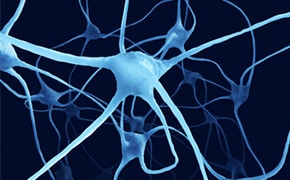Cell Signaling

Cell signaling refers mechanism of communication between cells within organisms driven by mechanical signals, such as touch, or chemical signals, such as hormones, growth factors, and neurotransmitters. In signaling pathways, stimuli are transmitted via a cascade process to yield the correct and appropriate response. Examples of cell signaling pathways include lipid signaling, insulin signaling, stress signaling, growth signaling, TOR signaling, and checkpoint signaling. Research in this field frequently covers studying and modeling cellular dynamics, analyzing cell signaling heterogeneity, crossover between cell signaling and other biological processes, and systematic studies of signaling dynamics.
Featured Categories
Explore 4,000+ potent probes to fine-tune target activity across diverse pathways and major classes. Get expert-designed bioactive small molecules for precise modulation.
Structural Genomics Consortium (SGC) chemical probes for target validation and numerous additional research applications and workflow needs.
Related Articles
- Explore key targets of cancer research and cell signaling research with the DNA damage response (DDR) pathway and do a deep dive into ATM, ATR, and p53 mechanisms involved in DNA damage checkpoints.
- Lipopolysaccharide (LPS) is a major component of Gram-negative bacteria, important for microbiological research.
- Acetylcholine is synthesized from acetyl coenzyme A and choline by the enzyme choline acetyltransferase. In addition to its synthesis in the liver, choline employed in acetylcholine production is derived from dietary sources.
- Collagenase Guide.Collagenases, enzymes that break down the native collagen that holds animal tissues together, are made by a variety of microorganisms and by many different animal cells.
- Uncover more about glycosaminoglycans and proteoglycans including the structure of glycosaminoglycans (GAGs), the different types of GAGs, and their functions.
- See All (112)
Related Protocols
- This procedure is for informational purposes including assay Procedure, definition, and calculations for Protease
- A review and resources for ion channel flux assays and protocols, along with liposome formation and proteoliposome preparation protocols
- Protocol for Assay Procedure for Cholesterol Oxidase
- Protease Fluorescent Detection Kit detects protease activity using FITC-labeled casein substrate.
- See All (10)
Visit our document search for data sheets, certificates and technical documentation.
Find More Articles and Protocols
How Can We Help
In case of any questions, please submit a customer support request
or talk to our customer service team:
Email custserv@sial.com
or call +1 (800) 244-1173
Additional Support
- Chromatogram Search
Use the Chromatogram Search to identify unknown compounds in your sample.
- Calculators & Apps
Web Toolbox - science research tools and resources for analytical chemistry, life science, chemical synthesis and materials science.
- Customer Support Request
Customer support including help with orders, products, accounts, and website technical issues.
- FAQ
Explore our Frequently Asked Questions for answers to commonly asked questions about our products and services.
To continue reading please sign in or create an account.
Don't Have An Account?

